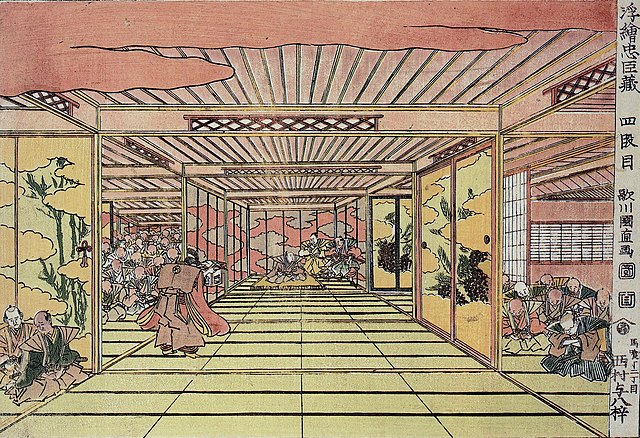Top Qs
Timeline
Chat
Perspective
Uki-e
Japanese woodblock prints From Wikipedia, the free encyclopedia
Remove ads
Uki-e (浮絵; "floating picture", implying "perspective picture") refers to a genre of ukiyo-e pictures that employs western conventions of linear perspective. Although they never constituted more than a minor genre, pictures in perspective were drawn and printed by Japanese artists from their introduction in the late 1730s through to the mid-nineteenth century.[1]

This early example of an uki-e print uses Western-style perspective for the interior, but more traditional Japanese technique for the exterior.

Collection the Cincinnati Art Museum
Around 1739, Okumura Masanobu studied European engravings to learn the rules of perspective. His engravings found their way to Japan either through Dejima or China.[1] Masanobu was the first to apply the term Uki-e to perspective images, and Utagawa Toyoharu fully developed the form in the late 1750s when he produced colored woodblock copies of engravings after Canaletto and Guardi. Toyoharu was also the first to adapt these techniques to Japanese subjects.
The interior of Kabuki theaters was a common subject in Uki-e prints. Interior scenes tend to be favored as it is easier to accurately apply one point perspective to architecture than to landscape.[1]
Remove ads
See also
Citations
References
External links
Wikiwand - on
Seamless Wikipedia browsing. On steroids.
Remove ads
